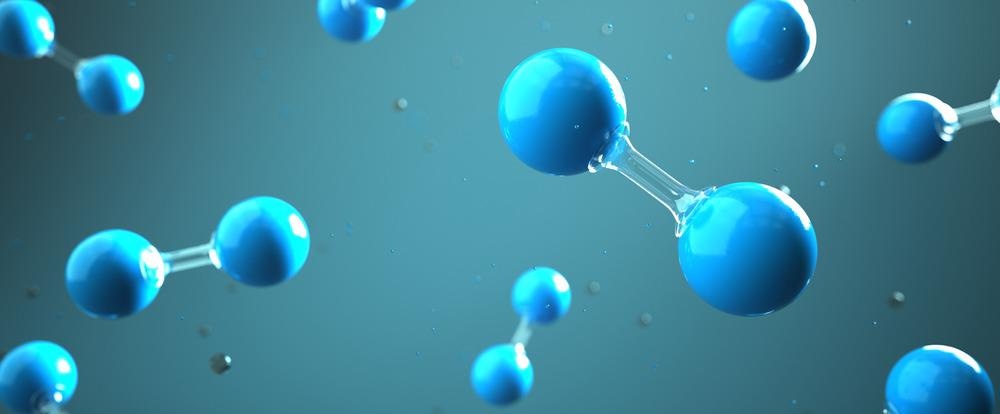 By Surbhi JainReviewed by Susha Cheriyedath, M.Sc.May 2 2022
By Surbhi JainReviewed by Susha Cheriyedath, M.Sc.May 2 2022In a review recently published in the open-access journal Energies, researchers discussed the utility of heterojunction semiconductors for the production of hydrogen as a clean energy carrier for environmental remediation.

Study: Hydrogen Production as a Clean Energy Carrier through Heterojunction Semiconductors for Environmental Remediation. Image Credit: Alexander Limbach/Shutterstock.com
Background
The hunt for sustainable and clean energy is becoming an increasingly important issue as a result of the growing population and the increasing need for clean resources due to environmental constraints. Unfortunately, most of the world's energy needs are met mostly by finite-resource fossil fuels, which result in the production of greenhouse gases, which contribute to climate change and other serious environmental problems. Renewable or alternative energy sources, such as wind, solar, and biomass, have been developed in this regard to help reduce greenhouse gases, particularly carbon dioxide.
Hydrogen is one of the most important components of a low-carbon energy system. To make optimum use of renewable energy while avoiding output regulation, electricity storage facilities are required. Semiconductor-based photocatalysis appears to be a potential approach for the clean synthesis of hydrogen.
The enriched capacity of swiftly adsorbing and photodegrading organic dyes is demonstrated by hierarchically arranged macro-mesoporous TiO2-graphene composite sheets. Heterojunctions, which use two semiconductors to minimize recombination and simplify the migration of photogenerated species towards the surface, appear to be an emerging scheme for designing novel photocatalysis systems among the existing techniques.
About the Study
In this study, the authors extensively explained and explored several semiconductor-based photocatalysis processes for environmental remediation, with a particular focus on heterojunction semiconductors, to pave the way for novel designs with improved environmental protection performance.
The researchers introduced and discussed various semiconductor-based photocatalysis processes for the remediation of the environment to find an efficient way of designing novel photocatalysis systems with high throughput performances. To preserve a direct view, the relevant photocatalytic performance of various structures and the placements of energy bands were also discussed and summarized. The applications, new and conventional innovations, approaches, and any essential as well as minor factors that play a part in effective hydrogen production by heterojunction-based semiconductors photocatalysis were investigated.
The team summarized all relevant information about environmentally friendly hydrogen generation from heterojunction-based semiconductor photocatalysis for environmental remediation and energy harvesting which could help specialists design more novel schemes with high throughput. Semiconductor-based techniques for fabricating novel photocatalysts triggered by visible-light irradiation were described and explored in order to generate renewable and green solar fuels like H2.
Observations
Because of its high gravimetric energy density, hydrogen was regarded as one of the most beneficial sustainable energy carriers with a high potential to replace fossil fuels. Furthermore, it was quite pure, and burning it produced no CO2 and resulted in the generation of water. Many studies reported the potential of semiconductor-based photocatalysis processes as promising methods for producing hydrogen. Both homogeneous and heterogeneous procedures could be used in the catalysis process; however, heterogeneous procedures were favored.
Photon energy was used to form an electron-hole pair in semiconductor-based photocatalysis, which facilitated the redox reactions. The recombination of photoinduced species was one of the major challenges in improving quantum efficiency in photocatalysis operations. Various solutions were developed and investigated to tackle the high recombination rate issue. A little amount of Ag/WO3/Bi2WO6 heterojunction could boost conversion rates by up to 250% when compared to pure counterparts.
The development of a three-component heterojunction improved visible-light absorption and boosted the separation efficiency of photogenerated electrons and holes. A 3% CuO/ZnO heterojunction resulted in significant photoreduction with a high removal efficiency toward Hg(II).
In addition, several studies reported the development of hybrid heterojunctions by using a variety of nanostructure morphologies. Furthermore, additive manufacturing technologies, coatings, doping, hierarchical designs, and other advancements in the semiconductor industry could significantly aid the semiconductor industry in manufacturing complex morphologies and structures in order to improve hydrogen production performance. The localized surface plasmon resonance (LSPR) stimulation could concentrate and intensify light energy, improve the local electric field at the nanomaterial's surface, and increase the photocatalytic kinetic reaction rate.
Conclusions
In conclusion, this study examined the design, preparation, and properties of innovative, visible-light-driven, high throughput, heterojunction composite photocatalysts for environmental remediation applications.
Many variables, such as morphology, size, composition, crystal structure, element oxidation states, optical absorption and electrochemical properties of the proposed heterojunction photocatalysts, catalyst dosage, temperature, photocatalytic mechanism, and initial pH, were found to be important in the production of hydrogen.
It was observed that the generated semiconductor should be fully comprehended and wisely designed for the intended application. The results necessitate precise knowledge of each parameter's and mechanism's potential advantages and disadvantages, benefits, and obstacles. The authors emphasized that heterojunction materials have a significant impact on conversion efficiency.
They mentioned that despite substantial advances in the development of heterojunction photocatalysts, significant challenges remain in the development of lucrative, simple, and cost-effective technologies to produce high-throughput and modern heterojunction photocatalysts for functional applications on an industrial scale.
They also believe that to achieve high-quality and effective heterojunction photocatalysts, future designs should precisely manage the porosity and surface condition, structure, contact interface, morphology, the crystallinity of substances, and hierarchical assembly.
More from AZoM: How is Fast Fourier Transform Used Alongside Electron Microscopy?
Disclaimer: The views expressed here are those of the author expressed in their private capacity and do not necessarily represent the views of AZoM.com Limited T/A AZoNetwork the owner and operator of this website. This disclaimer forms part of the Terms and conditions of use of this website.
Sources:
Bahadoran, A., Liu, Q., Ramakrishna, S., et al. Hydrogen Production as a Clean Energy Carrier through Heterojunction Semiconductors for Environmental Remediation. Energies 15(9) 3222 (2022).
https://www.mdpi.com/1996-1073/15/9/3222